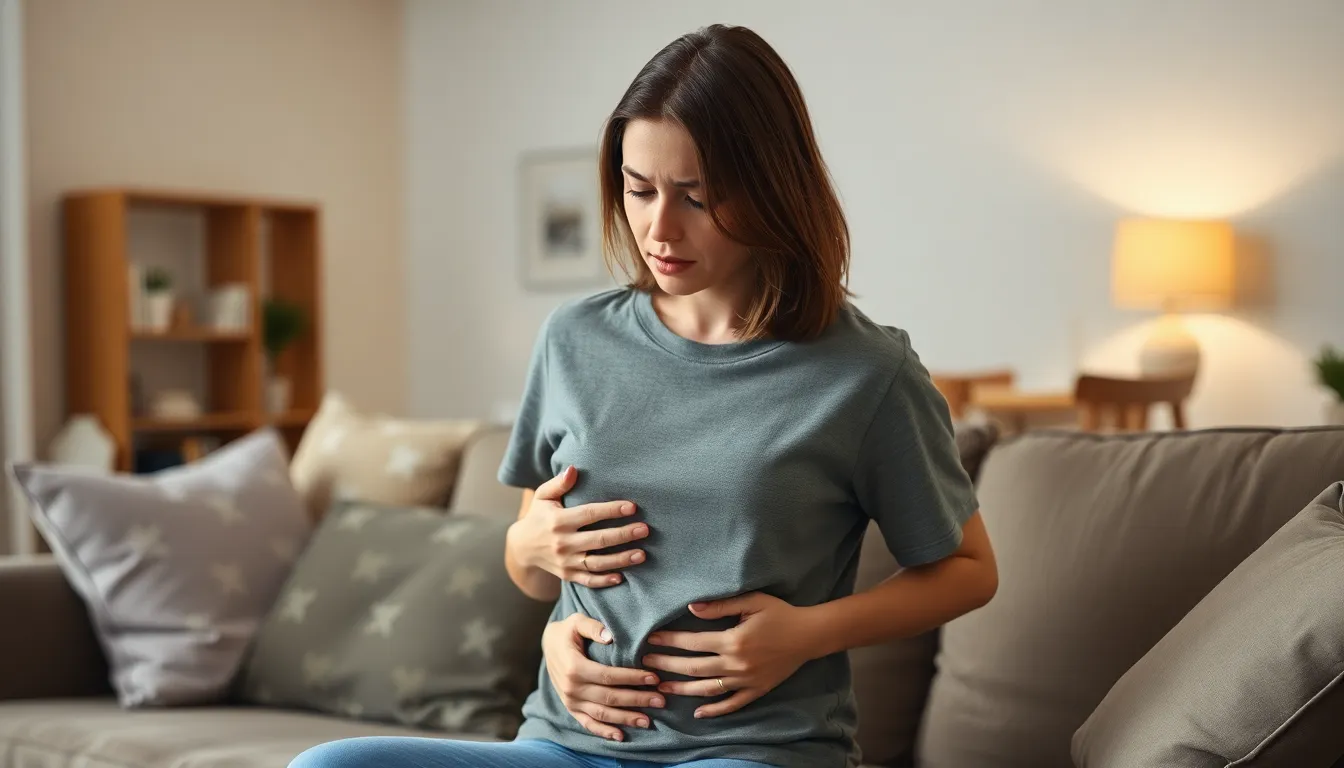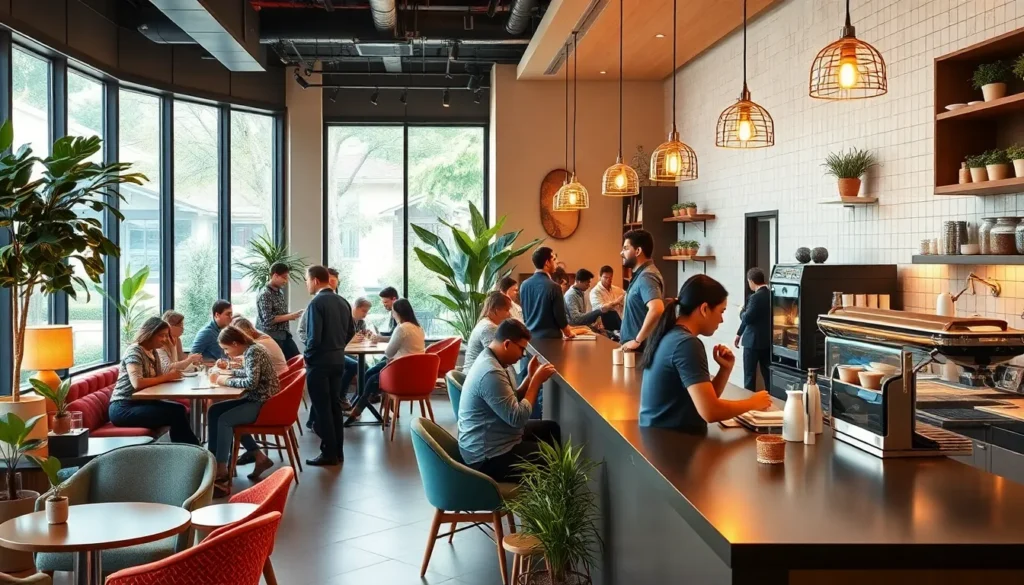Experiencing pain near the belly button on the left side can be concerning and often puzzling. This type of discomfort can stem from a variety of causes, ranging from mild digestive issues to more serious conditions. Understanding the potential reasons behind this pain is crucial for anyone seeking relief and clarity.
Many people may dismiss this pain as a simple stomachache, but it’s important to pay attention to the body’s signals. Identifying accompanying symptoms and their duration can help in determining whether a visit to a healthcare professional is necessary. By exploring the common causes and treatment options for left-sided belly button pain, individuals can empower themselves with knowledge and take proactive steps toward better health.
Table of Contents
ToggleUnderstanding Pain Near Belly Button Left Side
Pain near the belly button on the left side can stem from various causes. Identifying these causes is crucial for effective management.
Common Causes
- Gastrointestinal Issues: Conditions like irritable bowel syndrome (IBS), gas, and constipation can cause discomfort. Abdominal bloating often accompanies these symptoms.
- Diverticulitis: Affects the colon, leading to inflammation and pain in the lower left abdomen. This condition can result in fever and changes in bowel habits.
- Kidney Stones: When stones form in the kidneys, they can cause sharp, severe pain that may radiate to the belly button area. Nausea or vomiting often occurs alongside this pain.
- Hernia: A left-sided hernia might manifest as a lump near the belly button, accompanied by pain during heavy lifting or straining.
- Ectopic Pregnancy: In females, this condition can lead to severe left-sided abdominal pain. It’s a medical emergency and requires immediate attention.
Accompanying Symptoms
Recognizing additional symptoms is essential for determining the cause of the pain. Common accompanying symptoms include:
- Nausea: Often related to gastrointestinal issues.
- Fever: Can indicate an infection or inflammation, such as diverticulitis.
- Changes in Bowel Movements: Diarrhea or constipation may suggest IBS or diverticulitis.
- Swelling or Bloating: Indicates gastrointestinal distress.
When to Seek Medical Attention
Seeking medical attention is crucial if the pain becomes severe, persistent, or is accompanied by concerning signs. Immediate consultation is necessary for:
- Severe or worsening pain.
- High fever.
- Blood in stools or urine.
- Persistent vomiting.
Knowing the causes and symptoms of left-sided pain near the belly button helps individuals take informed actions regarding their health.
Common Causes of Pain Near Belly Button Left Side

Pain near the belly button on the left side can arise from various issues, primarily linked to digestive, reproductive, and musculoskeletal systems. Understanding these causes allows for better assessment and timely medical intervention when necessary.
Digestive Issues
Digestive issues often result in pain near the belly button on the left side. Conditions include:
- Irritable Bowel Syndrome (IBS): Characterized by abdominal pain, bloating, and changes in bowel habits. Symptoms may include diarrhea or constipation.
- Diverticulitis: Involves inflammation of small pouches in the colon, leading to severe abdominal pain, fever, and altered bowel movements.
- Kidney Stones: Sharp pain may occur when stones pass through the ureters, causing discomfort in the lower abdomen and back.
- Constipation: Build-up of stool in the intestines can lead to cramping and pain on the left side, accompanied by bloating and discomfort.
Reproductive System Concerns
Reproductive system issues can also cause pain in this area, especially in individuals assigned female at birth. Conditions include:
- Ectopic Pregnancy: This occurs when a fertilized egg implants outside the uterus, causing severe, localized pain and potential internal bleeding.
- Ovarian Cysts: Fluid-filled sacs can develop on ovaries, resulting in sharp or dull pain, usually correlating with the menstrual cycle.
- Pelvic Inflammatory Disease (PID): Infection of the reproductive organs can lead to significant abdominal discomfort, fever, and abnormal discharge.
Musculoskeletal Injuries
- Hernias: A bulge due to tissue displacement, often resulting in pain and discomfort, especially during physical activities or straining.
- Muscle Strains: Straining abdominal muscles can lead to localized pain, swelling, and difficulty in movement.
- Rib Problems: Issues such as fractured ribs or costochondritis can cause pain that radiates to the abdomen, impacting movement substantially.
Symptoms to Watch For
Recognizing symptoms associated with pain near the belly button on the left side is crucial. Noticing severe pain indicators and accompanying symptoms can help determine the need for medical evaluation.
Severe Pain Indicators
Severe pain may indicate a serious medical condition. Indicators of such pain include:
- Intense, sudden pain: Rapid onset of severe discomfort may signal conditions like kidney stones or a hernia.
- Persistent pain: Ongoing pain without relief could indicate an underlying issue requiring medical attention.
- Localized tenderness: Specific areas that are painful to touch can suggest conditions such as diverticulitis or appendicitis.
- Radiation of pain: Pain that spreads to other areas, such as the back or shoulder, may indicate issues related to organs like the kidneys.
Accompanying Symptoms
Several symptoms may accompany pain near the belly button on the left side. These may include:
- Nausea or vomiting: These signs can suggest gastrointestinal problems such as an obstruction or infection.
- Fever: Elevated body temperature may indicate an inflammatory process or infection.
- Changes in bowel habits: Diarrhea or constipation may point to digestive conditions like IBS or diverticulitis.
- Bloating or swelling: Abdominal distension can signify gastrointestinal distress or organ enlargement.
- Unusual discharge: Any abnormal vaginal or urinary discharge in individuals assigned female at birth may indicate reproductive issues.
By identifying these symptoms, individuals can better assess the severity of their condition and decide on appropriate next steps.
When to Seek Medical Attention
Individuals should seek medical attention for pain near the belly button on the left side under certain circumstances. Clear indicators include:
- Severe or Persistent Pain: Intense discomfort that does not subside may indicate a serious issue.
- High Fever: A temperature exceeding 101°F (38.3°C) alongside pain can signal infection.
- Blood in Stools or Urine: Any presence of blood requires immediate evaluation by a healthcare professional.
- Persistent Vomiting: Continuous vomiting, particularly if it occurs with other symptoms, may necessitate medical intervention.
- Localized Tenderness: Tenderness in the abdomen that is isolated to a specific area may suggest an acute condition, such as appendicitis or diverticulitis.
- Radiating Pain: Pain that spreads to other areas of the body, such as the back or shoulder, may indicate a more serious underlying problem.
- Changes in Bowel Habits: Severe diarrhea or constipation lasting more than a few days should prompt consultation.
Acknowledging these signs can assist in determining the urgency of seeking medical care, potentially leading to timely diagnosis and treatment.
Pain near the belly button on the left side can signal various health issues. It’s crucial for individuals to pay attention to their bodies and recognize when discomfort escalates. Understanding the potential causes and accompanying symptoms can empower them to make informed decisions about their health.
Seeking medical attention for severe or persistent pain is vital. Early diagnosis can lead to effective treatment and relief. By staying aware of their symptoms and acting promptly, individuals can better navigate their health concerns and ensure their well-being.









